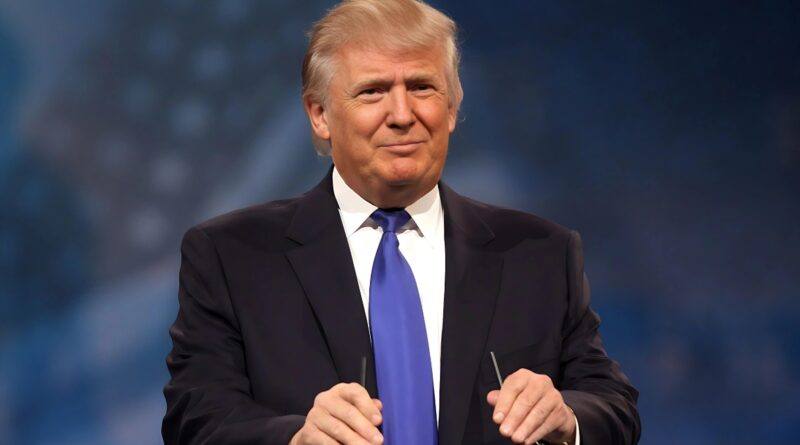Surprising Tariffs Now Trigger Fear In Markets This Week
By The WFY Bureau Desk | World Politics | August 2025
Policy declarations, particularly trade-related ones, often arrive at unconventional hours and with little notice.
Trump’s Late-Night Tariff Bombshell Rattles Global Trade Order
In yet another dramatic and unexpected policy shift, former U.S. President Donald Trump announced a fresh wave of sweeping tariffs on transhipped goods and adjusted rates for dozens of countries, just hours before a major global deadline on August 1, 2025. This move, dropped into global markets with mere minutes to spare, has once again stirred anxiety, disrupted forecasts, and underscored the increasingly unpredictable contours of global trade under Trump’s brand of economic nationalism.
A Familiar Pattern: Drama Before Deadline
Just before midnight in London, the world braced for the long-anticipated tariff enforcement deadline. Governments had been negotiating behind closed doors, corporates were fine-tuning strategies, and markets were holding steady in cautious anticipation. However, a last-minute announcement from Trump’s trade office threw everything into disarray: a 40% tariff was slapped on all transhipped goods ,products rerouted through third countries to bypass origin-based tariffs ,alongside new or heightened tariffs for over 30 nations, including key U.S. allies and strategic partners.
This development follows a well-documented pattern that has emerged during Trump’s second term in office. Policy declarations, particularly trade-related ones, often arrive at unconventional hours and with little notice. Previous episodes this year, such as the surprise tariff escalation in April and the last-minute delay in July, have created what analysts now call “deadline theatre” ,a style of diplomacy laced with brinkmanship, media optics, and strategic confusion.
Transshipped Goods: A Tactical Move
The 40% tariff on transhipped goods signals a targeted effort to clamp down on a long-standing loophole in global trade. Many exporters, especially those based in Asia, reroute shipments via secondary ports, often through Southeast Asian countries, to escape direct tariffs. This method, while technically legal under many free trade arrangements, has long irked U.S. policymakers. Trump’s latest action attempts to draw a clear line against what he sees as tariff evasion.
Countries like Thailand, Vietnam, and Malaysia, which have become central hubs in global supply chains for electronics, machinery, and textiles, now find themselves at the epicentre of this disruption. U.S. importers that rely on these rerouted supply chains must now scramble to adjust procurement plans, pricing models, and shipment timelines.
Allies Targeted Too
What has alarmed many foreign policy observers is the indiscriminate nature of the tariff revision. Switzerland, known for its historically neutral economic posture, was hit with a steep 39% tariff increase, despite no major ongoing trade conflict with the U.S. Canada, a fellow signatory to the USMCA, was also handed a tariff hike, causing immediate consternation among North American manufacturers.
Only a week prior, Trump had hailed a new trade agreement with the United Kingdom, calling it “historic” and signalling warmer transatlantic economic ties. Yet, even in that context, U.K. businesses now face increased compliance requirements and scrutiny under the new transhipment rule, particularly in sectors like pharmaceuticals and high-value machinery.
Markets in Turmoil, CEOs in a Bind
The broader impact of such unpredictability is already being felt across global financial and commodity markets. The S&P 500 opened 2.8% lower the morning after the announcement, while Asian stock markets tumbled. Semiconductor manufacturers, auto companies, and even agricultural exporters revised their earnings forecasts within hours. The Dow Jones Transportation Average, a proxy for global logistics and shipping, fell over 4% in a single day.
More significantly, top executives in manufacturing and logistics sectors have begun embedding trade uncertainty as a core assumption in their planning cycles. It is not just the size of the tariffs, but the sheer lack of consistency and the late-night timing that are proving most disruptive.
Supply chains, already strained by the lingering aftereffects of the COVID-19 pandemic and the Ukraine conflict, are being forced to reroute again ,this time not because of wars or pandemics, but because of a single administration’s unpredictable manoeuvres.
India’s Perspective: A Balancing Act
For India, the implications are complex. On one hand, India continues to benefit from the global realignment away from China, particularly in sectors like smartphone assembly, pharmaceuticals, and textiles. On the other hand, sudden tariff hikes create uncertainty for Indian exporters, especially in cases where goods are routed through third countries like the UAE or Singapore.
India’s Ministry of Commerce has reportedly sought immediate clarification on how the new rules will apply to Indian-origin goods rerouted through ASEAN partners. Trade experts also warn that if the U.S. decides to scrutinise Indian exports more aggressively, bilateral negotiations currently in progress, such as discussions around a partial trade pact, could stall.
There is also the broader concern of supply chain diversification. Indian exporters, especially in technology and engineering sectors, are now re-evaluating the value of investing heavily in US-oriented production lines. A senior policy advisor in Delhi remarked that India must avoid becoming collateral damage in what is increasingly a US-China-led tug-of-war on trade.
The WTO and Multilateral Fallout
Trump’s actions once again highlight the diminishing relevance of multilateral institutions like the World Trade Organization (WTO), whose frameworks are being bypassed through bilateral deals, emergency tariffs, and ad hoc announcements. The WTO’s most-favoured-nation (MFN) principle, which obliges member countries to extend any favourable trading terms to all other members, is being undermined with each targeted tariff hike.
Even as some nations explore legal recourse, many recognise that WTO enforcement mechanisms are slow, and outcomes uncertain. Moreover, Washington’s repeated refusal to reappoint judges to the WTO’s appellate body has weakened the institution’s authority.
This erosion of multilateral norms comes at a time when global trade needs more stability, not less. Inflationary pressures, food insecurity, climate-linked disruptions, and geopolitical tensions have all made the case for predictable and cooperative economic frameworks. Instead, many countries now find themselves dealing with late-night tweets and shifting tariff tables.
The ‘Art of the Deal’ Recast
To some, Trump’s methods are erratic. To others, they represent a calculated application of pressure designed to secure faster deals. During his previous term, Trump successfully renegotiated NAFTA into the USMCA by threatening to pull out of the agreement altogether. His current strategy borrows from the same playbook, ratchet up the pressure, wait for a response, and make last-minute concessions to extract maximum advantage.
While these tactics have yielded results in some instances, they come at the cost of global economic confidence. Trade uncertainty makes investment harder, planning riskier, and international cooperation more difficult. It fosters a climate where fear, rather than rules, guides decisions.
Backlash and the Road Ahead
Already, countries such as Germany, Japan, and Australia have issued guarded statements, while the European Union is expected to hold an emergency trade council meeting later this month. China, still locked in a complex negotiation with the U.S. over semiconductors and EVs, has called the move “disruptive and aggressive” in its internal communications.
India, for its part, is unlikely to retaliate immediately, but it may use this moment to reinforce the need for a diversified trade portfolio. The recent India-U.K. trade agreement could serve as a buffer against excessive U.S. exposure, and similar efforts with the EU and ASEAN are reportedly being accelerated.
What is certain, however, is that countries, including India, will now invest more in contingency planning. Trade has become as much about political psychology as it is about economics.
Trade by Shock, Governance by Surprise
In a world increasingly shaped by real-time media and instant reactions, Trump’s style of governance, particularly in trade, operates like a live television broadcast. It seeks attention, demands immediacy, and thrives on suspense. But beneath the theatre lies a hard truth: economic systems require trust, stability, and fairness.
As the dust settles from the latest tariff wave, governments around the world, India included, are reflecting not only on their trading positions, but also on the rules of the game itself. If trade continues to be governed by late-night surprises, the future may belong not to those with the best products, but to those who can survive uncertainty the longest.
Disclaimer: This article is an original editorial prepared for The WFY magazine’s August 2025 edition. It is written by the WFY Bureau Desk based on publicly available facts and ongoing global developments. It does not quote directly from any unauthorised source. The views are independent of any political affiliation.




